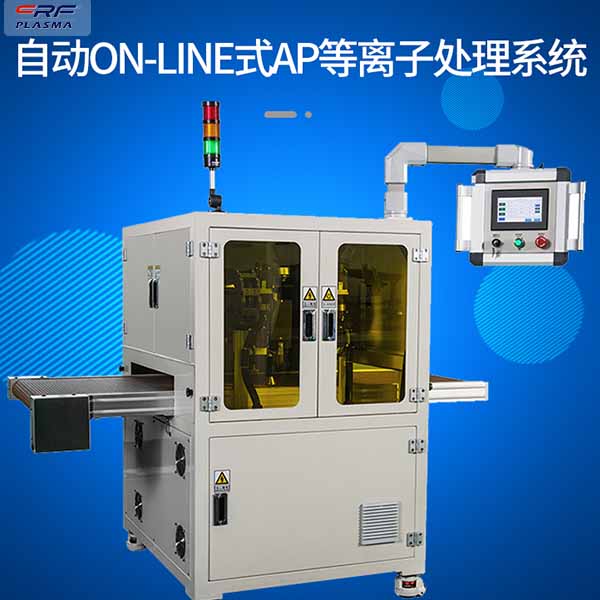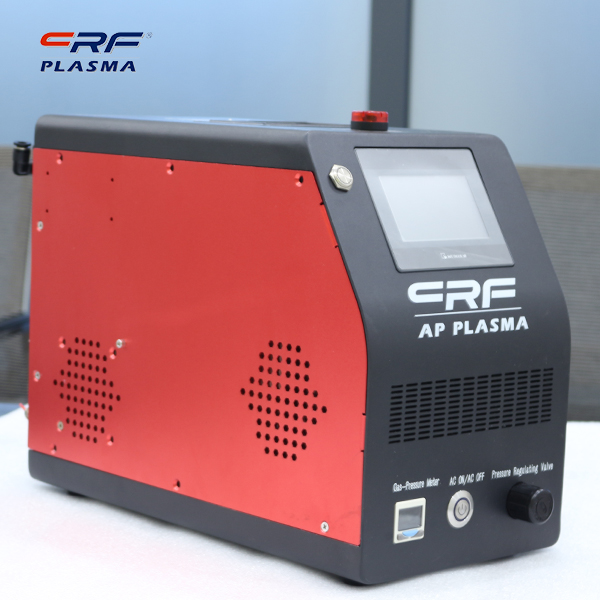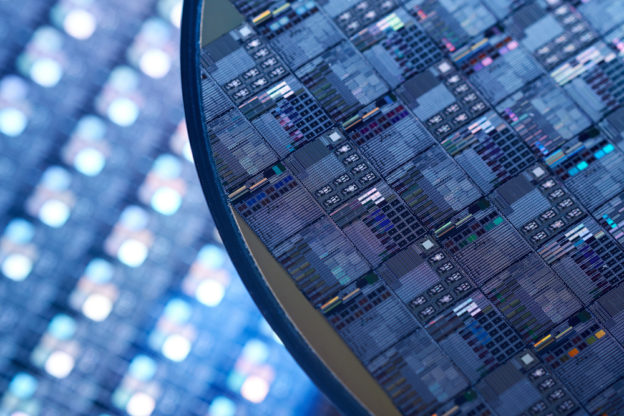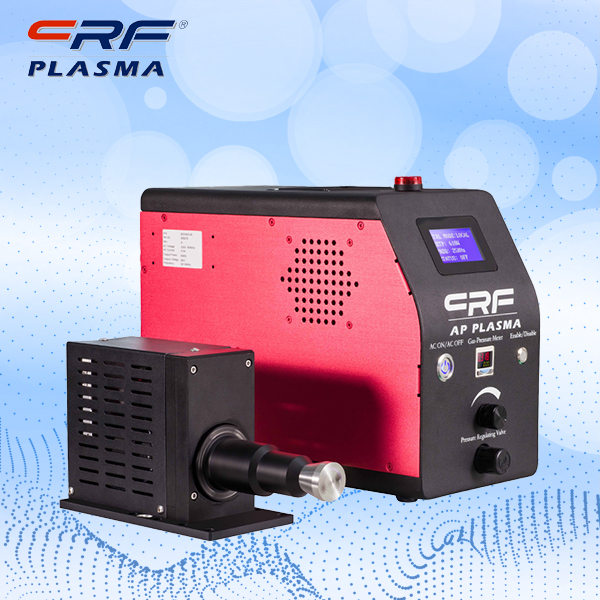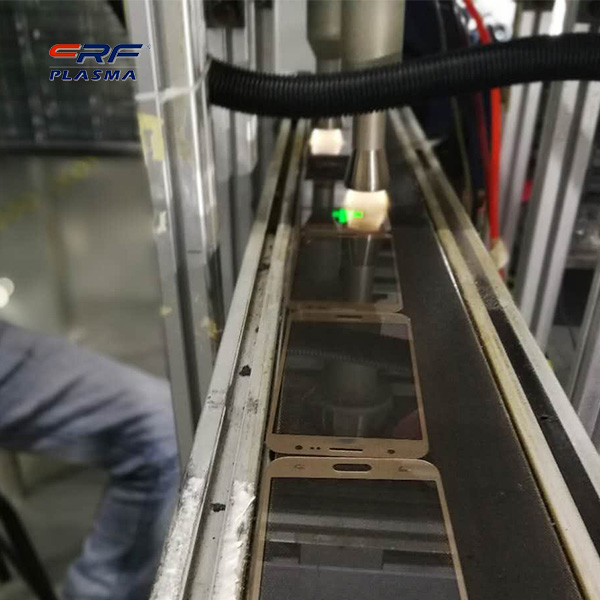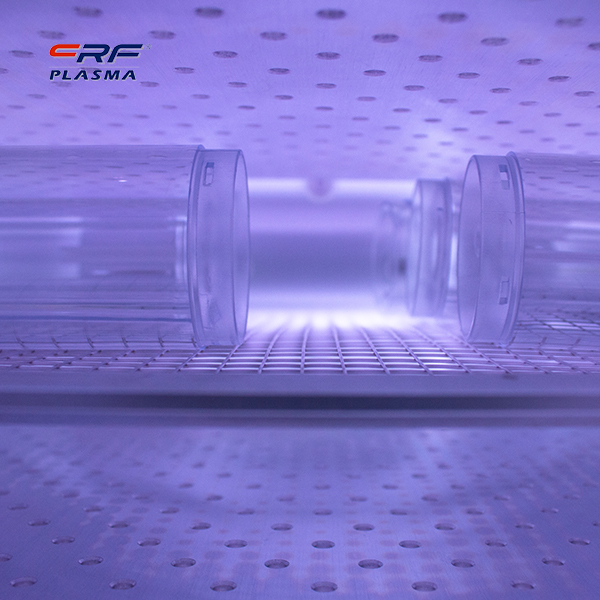
Welcome to Shenzhen Sing Fung Intelligent Manufacturing Co., Ltd.
E-mail:shaobo@sfi-crf.com
The radio frequency plasma cleaner plays an important role in improving the working reliability of GaAs semiconductor devices
- Categories:Company Dynamics
- Author:Plasma cleaning machine-CRF plasma plasma equipment-plasma surface treatment machine manufacturer-chengfeng intelligent manufacturing
- Origin:
- Time of issue:2022-01-08
- Views:
(Summary description)The radio frequency plasma cleaner plays an important role in improving the working reliability of GaAs semiconductor devices: GaAs has excellent optoelectronic properties and is a widely used semiconductor material in II-V compound semiconductors. However, the dangling bonds on the surface of GaAs materials are easily combined with impurities or oxygen elements, forming impurity defects and oxide layers on the surface, becoming non-radiative recombination centers, affecting the light-emitting characteristics of the material, and can bring serious consequences to the optoelectronic characteristics of GaAs semiconductor devices. Influence. Passivating the GaAs surface can not only reduce the surface impurity concentration, eliminate non-radiative recombination centers, and improve its photoelectric performance, but also the passivation protective layer can prevent the GaAs surface from combining with oxygen in the atmosphere and being re-oxidized , It plays an important role in improving the working reliability of GaAs semiconductor devices. Sulfur passivation of GaAs semiconductor materials can form sulfur-containing compounds on the surface, which can significantly improve the physical and chemical properties of the GaAs surface. Using the plasma processing method of a radio frequency plasma cleaner, the sulfur-containing Ar plasma is guided to bombard the GaAs sample, so that the sulfur reacts with the GaAs to form a thicker sulfur-containing passivation layer, and the passivation effect can be maintained for a long time. The method has strong controllability, avoids the influence of the strong corrosion effect of wet sulfur passivation, and provides new technical means for improving the performance of GaAs-based semiconductor optoelectronic devices and increasing their working life. Use the Ar glow discharge of a radio frequency plasma cleaner to clean the surface of the sample with low power to remove the surface oxide layer. Then the sulfur element is heated, and the sulfur partial pressure in the vacuum chamber can be adjusted appropriately by changing the heating temperature. Then through Ar, using Ar plasma induction, the sulfur vapor is discharged to generate sulfur plasma, which reacts with the CaAs sample on the slide table to generate stable sulfur-containing compounds on the surface of the sample. In order to adjust the partial pressure of sulfur vapor in a wider range, we appropriately control the pumping rate of the vacuum system by adjusting the vacuum baffle to ensure that there is sufficient and stable sulfur vapor concentration in the cavity to participate in the surface reaction of the sample. After Ar plasma cleaning by a radio frequency plasma cleaner, the PL intensity is slightly higher than that of the untreated GaAs sample. This is because Ar plasma has a cleaning effect on the oxide layer on the GaAs surface, which reduces the non-radiative recombination of the GaAs surface and improves the efficiency of photoluminescence. The PL intensity of the sample treated with sulfur-containing plasma is 104% higher than that of the sample bombarded by Ar plasma alone, indicating that the sulfur plasma has a good surface passivation effect. Compared with the untreated sample, the PL peak intensity increased by 71%, and after annealing, the peak wavelength of the plasma sulfur passivated sample was restored. The passivation of GaAs samples by sulfur plasma will not cause obvious impurity pollution, especially the passivation effect is relatively stable, which is more suitable for the passivation process of GaAs optoelectronic devices. The surface of the GaAs substrate was subjected to dry sulfur passivation using a radio frequency plasma cleaner method. The passivation effect of radio frequency plasma is affected by substrate temperature, sputtering power, and degradation temperature. By optimizing the sulfur plasma passivation conditions, the PL intensity of the sample was increased by 71%, and it showed better PL stability.
The radio frequency plasma cleaner plays an important role in improving the working reliability of GaAs semiconductor devices
(Summary description)The radio frequency plasma cleaner plays an important role in improving the working reliability of GaAs semiconductor devices:
GaAs has excellent optoelectronic properties and is a widely used semiconductor material in II-V compound semiconductors. However, the dangling bonds on the surface of GaAs materials are easily combined with impurities or oxygen elements, forming impurity defects and oxide layers on the surface, becoming non-radiative recombination centers, affecting the light-emitting characteristics of the material, and can bring serious consequences to the optoelectronic characteristics of GaAs semiconductor devices. Influence.
Passivating the GaAs surface can not only reduce the surface impurity concentration, eliminate non-radiative recombination centers, and improve its photoelectric performance, but also the passivation protective layer can prevent the GaAs surface from combining with oxygen in the atmosphere and being re-oxidized , It plays an important role in improving the working reliability of GaAs semiconductor devices.
Sulfur passivation of GaAs semiconductor materials can form sulfur-containing compounds on the surface, which can significantly improve the physical and chemical properties of the GaAs surface.
Using the plasma processing method of a radio frequency plasma cleaner, the sulfur-containing Ar plasma is guided to bombard the GaAs sample, so that the sulfur reacts with the GaAs to form a thicker sulfur-containing passivation layer, and the passivation effect can be maintained for a long time. The method has strong controllability, avoids the influence of the strong corrosion effect of wet sulfur passivation, and provides new technical means for improving the performance of GaAs-based semiconductor optoelectronic devices and increasing their working life.
Use the Ar glow discharge of a radio frequency plasma cleaner to clean the surface of the sample with low power to remove the surface oxide layer. Then the sulfur element is heated, and the sulfur partial pressure in the vacuum chamber can be adjusted appropriately by changing the heating temperature. Then through Ar, using Ar plasma induction, the sulfur vapor is discharged to generate sulfur plasma, which reacts with the CaAs sample on the slide table to generate stable sulfur-containing compounds on the surface of the sample.
In order to adjust the partial pressure of sulfur vapor in a wider range, we appropriately control the pumping rate of the vacuum system by adjusting the vacuum baffle to ensure that there is sufficient and stable sulfur vapor concentration in the cavity to participate in the surface reaction of the sample.
After Ar plasma cleaning by a radio frequency plasma cleaner, the PL intensity is slightly higher than that of the untreated GaAs sample. This is because Ar plasma has a cleaning effect on the oxide layer on the GaAs surface, which reduces the non-radiative recombination of the GaAs surface and improves the efficiency of photoluminescence.
The PL intensity of the sample treated with sulfur-containing plasma is 104% higher than that of the sample bombarded by Ar plasma alone, indicating that the sulfur plasma has a good surface passivation effect.
Compared with the untreated sample, the PL peak intensity increased by 71%, and after annealing, the peak wavelength of the plasma sulfur passivated sample was restored. The passivation of GaAs samples by sulfur plasma will not cause obvious impurity pollution, especially the passivation effect is relatively stable, which is more suitable for the passivation process of GaAs optoelectronic devices.
The surface of the GaAs substrate was subjected to dry sulfur passivation using a radio frequency plasma cleaner method. The passivation effect of radio frequency plasma is affected by substrate temperature, sputtering power, and degradation temperature. By optimizing the sulfur plasma passivation conditions, the PL intensity of the sample was increased by 71%, and it showed better PL stability.
- Categories:Company Dynamics
- Author:Plasma cleaning machine-CRF plasma plasma equipment-plasma surface treatment machine manufacturer-chengfeng intelligent manufacturing
- Origin:
- Time of issue:2022-01-08 22:55
- Views:
The radio frequency plasma cleaner plays an important role in improving the working reliability of GaAs semiconductor devices:
GaAs has excellent optoelectronic properties and is a widely used semiconductor material in II-V compound semiconductors. However, the dangling bonds on the surface of GaAs materials are easily combined with impurities or oxygen elements, forming impurity defects and oxide layers on the surface, becoming non-radiative recombination centers, affecting the light-emitting characteristics of the material, and can bring serious consequences to the optoelectronic characteristics of GaAs semiconductor devices. Influence.
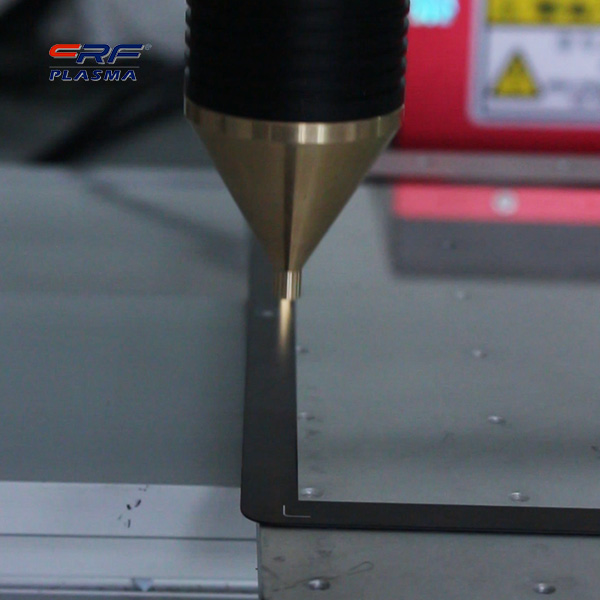 Passivating the GaAs surface can not only reduce the surface impurity concentration, eliminate non-radiative recombination centers, and improve its photoelectric performance, but also the passivation protective layer can prevent the GaAs surface from combining with oxygen in the atmosphere and being re-oxidized , It plays an important role in improving the working reliability of GaAs semiconductor devices.
Passivating the GaAs surface can not only reduce the surface impurity concentration, eliminate non-radiative recombination centers, and improve its photoelectric performance, but also the passivation protective layer can prevent the GaAs surface from combining with oxygen in the atmosphere and being re-oxidized , It plays an important role in improving the working reliability of GaAs semiconductor devices.
Sulfur passivation of GaAs semiconductor materials can form sulfur-containing compounds on the surface, which can significantly improve the physical and chemical properties of the GaAs surface.
Using the plasma processing method of a radio frequency plasma cleaner, the sulfur-containing Ar plasma is guided to bombard the GaAs sample, so that the sulfur reacts with the GaAs to form a thicker sulfur-containing passivation layer, and the passivation effect can be maintained for a long time. The method has strong controllability, avoids the influence of the strong corrosion effect of wet sulfur passivation, and provides new technical means for improving the performance of GaAs-based semiconductor optoelectronic devices and increasing their working life.
Use the Ar glow discharge of a radio frequency plasma cleaner to clean the surface of the sample with low power to remove the surface oxide layer. Then the sulfur element is heated, and the sulfur partial pressure in the vacuum chamber can be adjusted appropriately by changing the heating temperature. Then through Ar, using Ar plasma induction, the sulfur vapor is discharged to generate sulfur plasma, which reacts with the CaAs sample on the slide table to generate stable sulfur-containing compounds on the surface of the sample.
In order to adjust the partial pressure of sulfur vapor in a wider range, we appropriately control the pumping rate of the vacuum system by adjusting the vacuum baffle to ensure that there is sufficient and stable sulfur vapor concentration in the cavity to participate in the surface reaction of the sample.
After Ar plasma cleaning by a radio frequency plasma cleaner, the PL intensity is slightly higher than that of the untreated GaAs sample. This is because Ar plasma has a cleaning effect on the oxide layer on the GaAs surface, which reduces the non-radiative recombination of the GaAs surface and improves the efficiency of photoluminescence.
The PL intensity of the sample treated with sulfur-containing plasma is 104% higher than that of the sample bombarded by Ar plasma alone, indicating that the sulfur plasma has a good surface passivation effect.
Compared with the untreated sample, the PL peak intensity increased by 71%, and after annealing, the peak wavelength of the plasma sulfur passivated sample was restored. The passivation of GaAs samples by sulfur plasma will not cause obvious impurity pollution, especially the passivation effect is relatively stable, which is more suitable for the passivation process of GaAs optoelectronic devices.
The surface of the GaAs substrate was subjected to dry sulfur passivation using a radio frequency plasma cleaner method. The passivation effect of radio frequency plasma is affected by substrate temperature, sputtering power, and degradation temperature. By optimizing the sulfur plasma passivation conditions, the PL intensity of the sample was increased by 71%, and it showed better PL stability.
Scan the QR code to read on your phone

TEL:0755-3367 3020 / 0755-3367 3019

E-mail:sales-sfi@sfi-crf.com

ADD:Mabao Industrial Zone, Huangpu, Baoan District, Shenzhen




